1. What is GF-6?
GF-6A and GF-6B is the latest minimum standard implemented by ILSAC to ensure oils are meeting the needs of newer vehicles and new engine technology. The new standards will go into effect May 1, 2020.
2. Why is GF-6 needed?
Automakers now require higher-quality oils to protect their latest engine designs, along with a need for lubricants to offer a greater contribution to fuel economy. ILSAC GF-6A and GF-6B improves upon GF-5 in six areas:
1. Fuel economy and fuel economy retention
2. Engine durability
3. Wear protection for idle-stop
4. Low-speed pre-ignition minimization
5. Piston cleanliness
6. Chain wear protection
3. What is ILSAC?
ILSAC, or the International Lubricants Standardization and Approval Committee, was formed in 1992 by AAMA (American Automobile Manufacturers Association, representatives of DaimlerChrysler Corporation, Ford Motor Company, and General Motors Corporation) and JAMA (Japan Automobile Manufacturers Association) to define the needs, parameters, licensing, and administration of lubricant specifications. Along with the Tripartite system—API, SAE, and ASTM—they formed the Engine Oil Licensing and Certification System (EOLCS).
ILSAC oils usually display the API Service Symbol (Donut) with the Energy Conserving designation and/or API Certification Mark (Starburst).
4. How does it differ from API?
API stands for American Petroleum Institute. API is responsible for identifying the standard that a motor oil meets. To receive the API seal of approval, the motor oil has to comply with the Society of Automotive Engineers (SAE) oil viscosity standards. The approval will appear at the center of the API seal or “donut.” For example, SAE 5W-20.
The API is a consensus specification voted on by all automotive organizations. ILSAC differs because it also measures fuel economy, while API does not.
5. What is API SP?
API SP is the new minimum engine oil standard developed to address the critical needs of today’s engines; including chain wear, low speed pre-ignition, and deposits. API SP is the foundation for the ILSAC GF-6 specification but does not include fuel economy. API SP is available for viscosity grades from 0W-16 to 20W-50.
6. What happens to GF-5/API SN PLUS? Can I still get GF-5 motor oils?
GF-5/API SN Plus motor oils will begin to fade out of distribution after the May 1, 2020 launch of the new standard of motor oils (GF-6/API SP). However, ILSAC GF-6 and API SP motor oils are required to be backwards compatible, so any approved motor oils will be okay to use in GF-5/API SN Plus applications or any previous GF-X/API applications.
7. How do I know if a motor oil is GF-6/API SP approved?
Oils that meet ILSAC GF-6A standard will display the “Starburst” API mark, which may be used on oils meeting GF-5 or earlier recommendations.
If the oil meets ILSAC GF-6B recommendations, it will display a new API mark, the “Shield,” and can be used where SAE 0W-16 oils are recommended.
Oils that meet the API SP standard will feature the updated API “Donut” with the SP designation. These API SP approved oils can be used in all previous API service category applications.
8. Why are there two GF-6 categories and what is the difference?
ILSAC GF-6A can be used to meet GF-5 oil recommendations and earlier. GF-6A products will display the “Starburst” API mark. GF-6A is backwards compatible, meaning it encompasses GF1-5 standards as well and is designed for SAE grades 0W-20, 5W-20, 5W-30, and 10W-30.
ILSAC GF-6B includes all the requirements of GF-6A, but it is only used for SAE 0W-16 grades. These ILSAC GF-6B approved products will display a new “Shield” API mark. The new “Shield” came at the request of automakers to prevent confusion and ensure that 0W-16 oils are used only in applications where they are recommended.
9. What types of testing are included in the new standards?
At Valvoline, we’re capable of running more of the required tests in our dedicated engine lab so that our oils will go above and beyond these industry standards, delivering more protection for your engine.
10. When is the first license date for GF-6 and API SP?
May 1, 2020. And Valvoline is hard at work to be ready for launch.
11. When will Valvoline be ready? Does Valvoline meet ILSAC GF-6?
Motor oils are not allowed to claim GF-6/API approval until the first license date of May 1, 2020. But Valvoline expects our portfolio to be GF-6 ready before the first license date, and we will move quickly to highlight our approvals once licensing is available.
12. How do I know if my vehicle requires an ILSAC GF-6A or GF-6B motor oil?
ILSAC GF-6A and GF-6B will be the standard as of May 1, 2020, but you won’t see any vehicles requiring the new ILSAC specs until at least 2021, since 2020 vehicles are already on the market. However, some OEMs could issue service bulletins or update online owner’s manuals any time after May 1, 2020.
If your car previously called for ILSAC GF1-5, you are safe to use oils formulated with the new ILSAC GF-6A standards. ILSAC GF-6B can be used to meet SAE 0W-16 recommendations.
13. How will this affect my automotive business? How should I prepare?
You should expect to see OEM service bulletins and updated online owner’s manuals in 2020 that recommend ILSAC GF-6/API SP motor oils. Also, new 2021 model year vehicles will begin to be spec GF-6/API SP. Valvoline can help prepare your team and your customers on the change and what to expect. You can reach us at 1-800-TEAM-VAL.
14. How can I contact Valvoline to learn more about these new formulations?
You can reach us at 1-800-TEAM-VAL.

